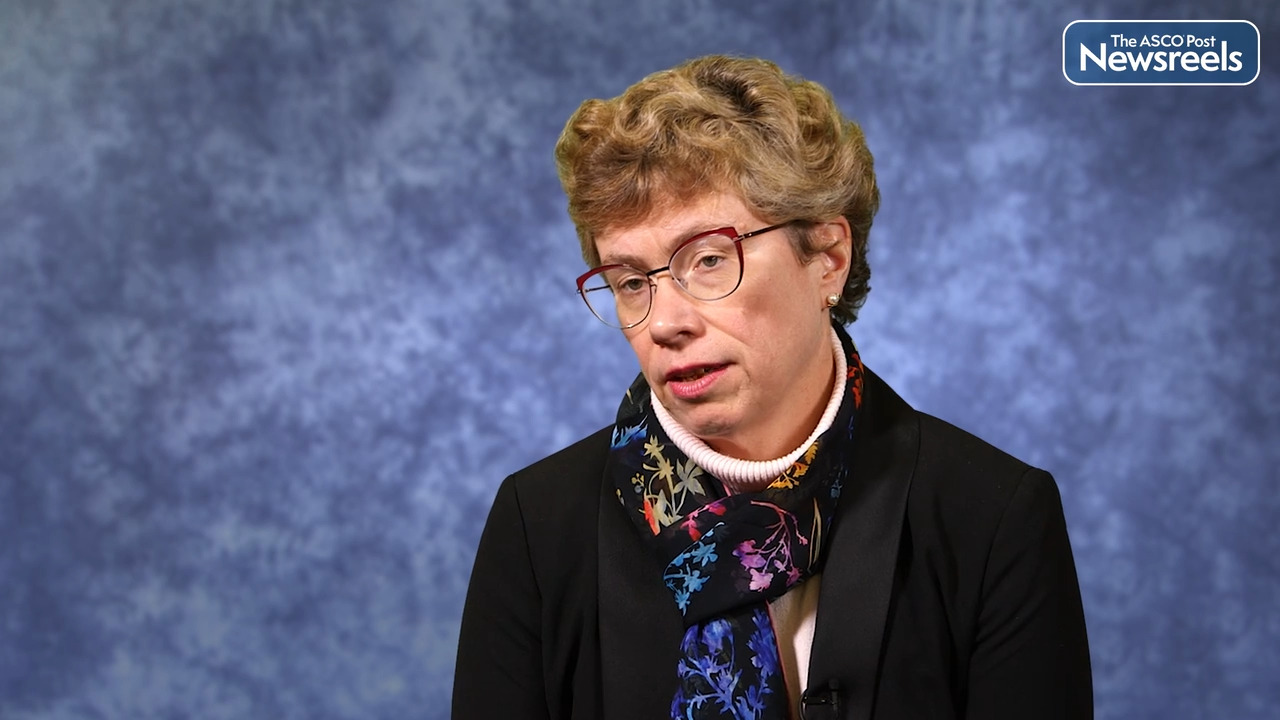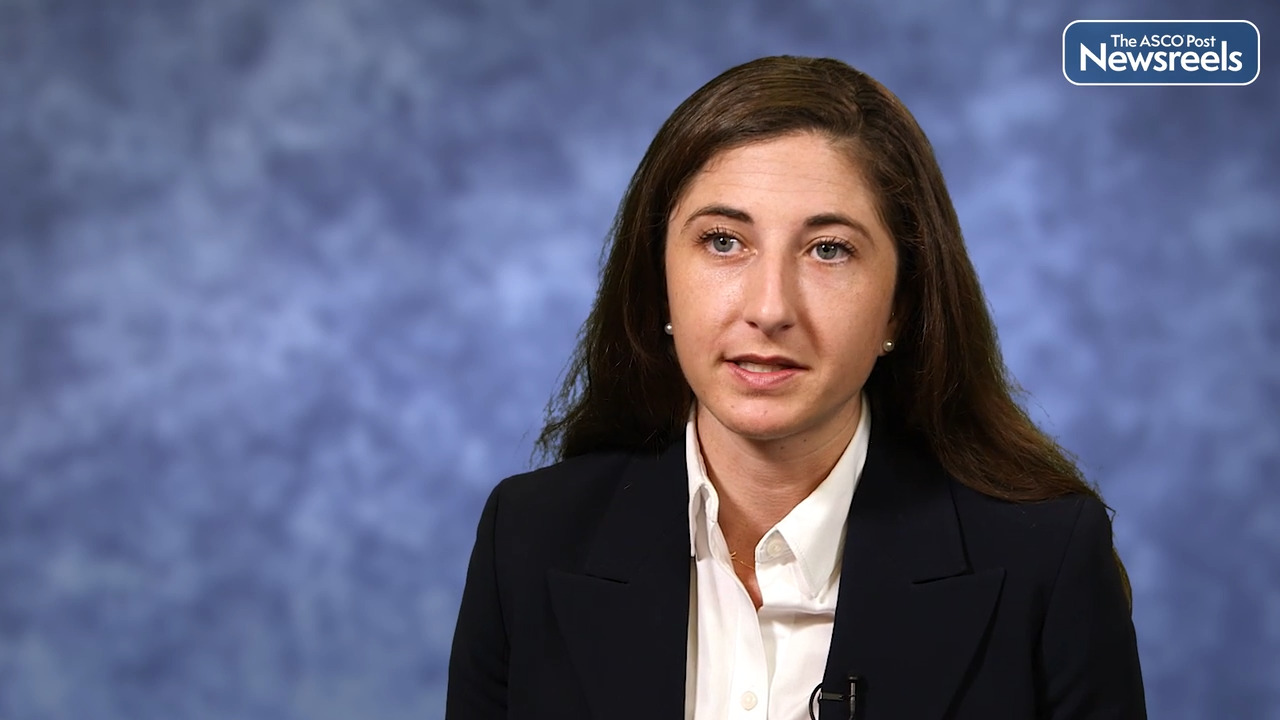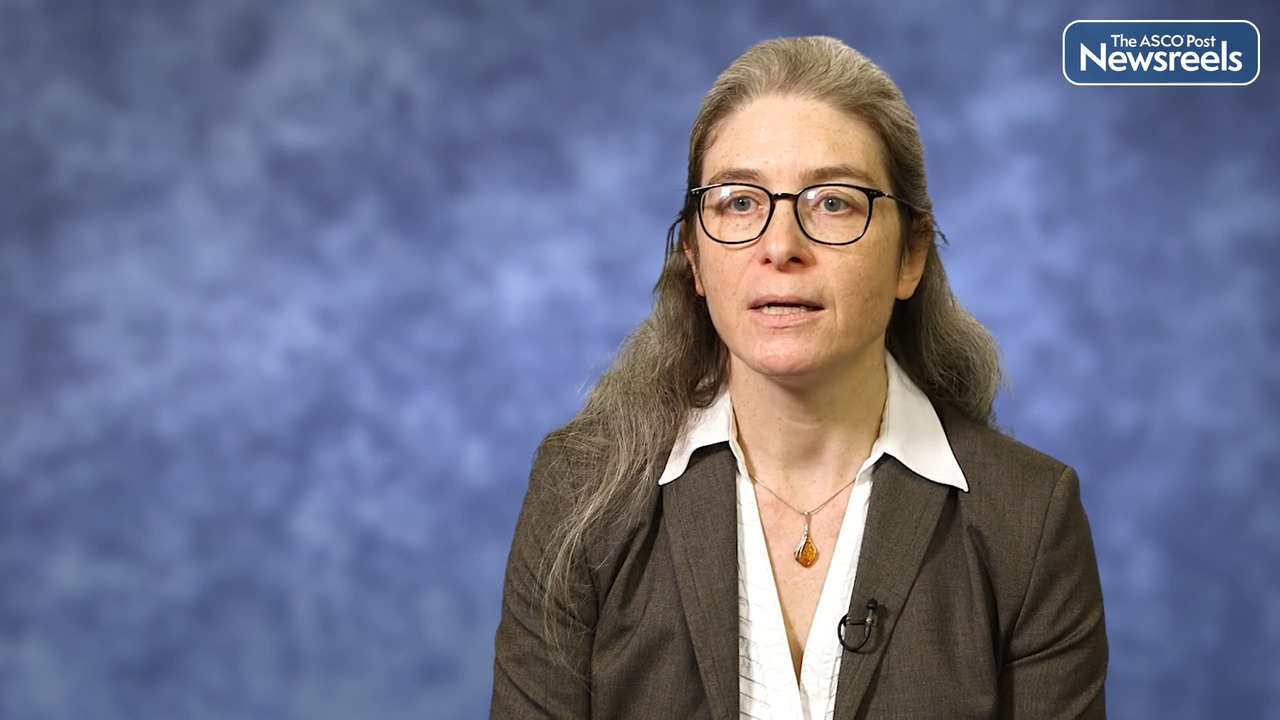Omission of Radiotherapy in Children and Adolescents With Early-Stage Classical Hodgkin Lymphoma With Adequate Response to OEPA Chemotherapy
As reported in The Lancet Oncology by Mauz-Körholz et al, children and adolescents with early-stage classical Hodgkin lymphoma enrolled in the EuroNet-PHL-C1 study who had an adequate response to an OEPA chemotherapy regimen (vincristine, etoposide, prednisone, and doxorubicin) and did not receive...
Axicabtagene Ciloleucel in Refractory Large B-Cell Lymphoma: 5-Year Results of the ZUMA-1 Trial
As reported in the journal Blood by Sattva S. Neelapu, MD, and colleagues, 5-year outcomes from the the phase II ZUMA-1 trial showed that axicabtagene ciloleucel was associated with maintained response in one-third of patients with refractory large B-cell lymphoma. The estimated 5-year overall...
Zanubrutinib for Chronic Lymphocytic Leukemia or Small Lymphocytic Lymphoma
On January 19, 2023, the kinase inhibitor zanubrutinib was approved for treatment of chronic lymphocytic leukemia (CLL) or small lymphocytic lymphoma (SLL).1 Supporting Efficacy Data Approval was based on findings in the SEQUOIA trial (ClinicalTrials.gov identifier NCT03336333) in patients with...
Have We Reached the Limits of Chemotherapy for Burkitt Lymphoma?
Burkitt lymphoma (BL) is a fascinating disease from which many groundbreaking medical and oncologic lessons have been learned. Since the Irish surgeon Denis P. Burkitt, MD, FRCS, FRS, first described rapidly enlarging jaw and facial tumors in Ugandan children in 1958,1 the study of BL has led to...
Whole-Genome Sequencing May Illuminate the Genetic Evolution of Classical Hodgkin Lymphoma
Researchers have discovered that whole-genome sequencing—rather than the current standard of exome sequencing—may allow physicians to better identify genetic changes that drive cancer development and growth, and create the most effective, personalized treatment plans for patients with classical...
Addition of Bortezomib to First-Line Dexamethasone, Rituximab, and Cyclophosphamide for Waldenström’s Macroglobulinemia
As reported in the Journal of Clinical Oncology by Buske et al, the European Consortium for Waldenström’s Macroglobulinemia (ECWM)-1 study has shown a numeric benefit in progression-free survival with the addition of bortezomib to dexamethasone, rituximab, and cyclophosphamide (DRC; B-DRC) in the...
Brexucabtagene Autoleucel in Relapsed or Refractory Mantle Cell Lymphoma in Standard-of-Care Practice
In an analysis from the U.S. Lymphoma CAR T Consortium reported in the Journal of Clinical Oncology, Wang et al found that standard-of-care treatment with brexucabtagene autoleucel in relapsed or refractory mantle cell lymphoma since its approval in this setting has been associated with response...
Association of Anthracycline Use With Risk of Congestive Heart Failure Among Patients Treated for Breast Cancer or Lymphoma
In a retrospective, population-based, case-control study reported in JAMA Network Open, Larsen et al found that patients receiving anthracyclines for breast cancer or lymphoma were at a significantly elevated risk of congestive heart failure vs noncancer controls. No significant difference in risk...
Complete Response to Glofitamab at End of Treatment Heralds Prolonged Remission in Lymphoma
Patients with large B-cell lymphoma who achieve a complete response to glofitamab are very likely to remain in remission 12 months after the end of treatment, according to Martin Hutchings, MD, PhD, of Rigshospitalet in Copenhagen, who reported these findings at the 2022 American Society of...
Study Suggests Ibrutinib May Obviate Need for Autologous Stem Cell Transplantation in Some Younger Patients With Mantle Cell Lymphoma
Although longer follow-up is needed, the results of the three-arm randomized TRIANGLE study suggest that the tyrosine kinase inhibitor ibrutinib may replace autologous stem cell transplantation (ASCT) after chemoimmunotherapy in younger patients with previously untreated mantle cell lymphoma (MCL). ...
Many Survivors of Childhood Hodgkin Lymphoma Show Signs of Neurocognitive Impairment
Long-term follow-up of survivors of childhood Hodgkin lymphoma from the St. Jude Lifetime Cohort showed signs of “epigenetic accelerated aging,” and many of these survivors had signs of neurocognitive impairment by their late 30s, researchers reported at the 2022 American Society of Hematology...
CAR T-Cell Therapy vs Chemoimmunotherapy in Second-Line Treatment of Resistant Large B-Cell Lymphoma
New research has confirmed the superiority of lisocabtagene maraleucel over the standard of care for the second-line treatment of primary refractory or early relapsed large B-cell lymphoma, according to data presented by lead study author Jeremy S. Abramson, MD, Associate Professor of Medicine at...
Expert Point of View: Julio Chavez, MD
Julio Chavez, MD, a hematologist at Moffitt Cancer Center, Tampa, Florida, commented on the updated results from the MAGNOLIA trial. “MAGNOLIA was a phase II trial that included patients with marginal zone lymphoma after one or more prior lines of therapy. At the ASH meeting, we heard updated...
MAGNOLIA Trial: Zanubrutinib Yields High Response Rates With Low Rate of Cardiac Events in Marginal Zone Lymphoma
Zanubrutinib—a next-generation Bruton’s tyrosine kinase (BTK) inhibitor—achieved high response rates and durable disease control with a low incidence of cardiac effects in patients with relapsed or refractory marginal zone lymphoma, according to updated findings from the final analysis of the phase ...
Expert Point of View: Alexey Danilov, MD, PhD
Alexey Danilov, MD, PhD, Co-Director, Toni Stephenson Lymphoma Center and Professor, Division of Lymphoma, Department of Hematology & Hematopoietic Cell Transplantation, City of Hope, Duarte, California, commented on the phase III ALPINE trial comparing ibrutinib and zanubrutinib in patients...
Is Zanubrutinib Poised to Become a New Standard of Care in Relapsed or Refractory CLL and SLL?
The next-generation Bruton’s tyrosine kinase (BTK) inhibitor zanubrutinib demonstrated superior progression-free survival compared with ibrutinib, with an improved cardiac safety profile, in the first head-to-head comparison between these two BTK inhibitors in relapsed or refractory chronic...
Dietary Intervention May Help Reduce Chronic Fatigue, Improve Quality of Life for Cancer Survivors
Researchers have discovered that dietary interventions may help reduce fatigue, improve diet quality, and lead to an overall better quality of life for cancer survivors, according to a new study published by Weinhold et al in Nutrition and Cancer. Background For many cancer survivors, the side...
Mosunetuzumab-axgb for Relapsed or Refractory Follicular Lymphoma
On December 22, 2022, mosunetuzumab-axgb, a bispecific CD20-directed CD3 T-cell engager, was granted accelerated approval for adults with relapsed or refractory follicular lymphoma after two or more lines of systemic therapy.1 Supporting Efficacy Data Approval was based on findings in the...
Complete Response to Glofitamab at End of Treatment Heralds Prolonged Remission in Lymphoma
Patients with large B-cell lymphoma who achieve a complete response to glofitamab are very likely to remain in remission 12 months after the end of treatment, according to Martin Hutchings, MD, PhD, of Rigshospitalet in Copenhagen, who reported these findings at the 2022 American Society of...
CAR T-Cell Therapy vs Chemoimmunotherapy in Second-Line Treatment of Resistant Large B-Cell Lymphoma
New research has confirmed the superiority of lisocabtagene maraleucel over the standard of care for the second-line treatment of primary refractory or early relapsed large B-cell lymphoma, according to data presented by lead study author Jeremy S. Abramson, MD, Associate Professor of Medicine at...
Findings on Cardiovascular Imaging in Patients Receiving Ibrutinib: Association With Cardiotoxicity
In a study reported in JAMA Oncology, Buck et al found that myocardial injury detected on cardiovascular magnetic resonance imaging (CMR) was common in patients treated with ibrutinib and was associated with an increased risk of major adverse cardiac events. Study Details The study included data...
Association of Radiation and Procarbazine Dose With Risk of Colorectal Cancer in Survivors of Hodgkin Lymphoma
In a Dutch study reported in JAMA Oncology, Geurts et al found a dose-response relationship between radiotherapy and risk of colorectal cancer among survivors of Hodgkin lymphoma, with the risk being increased with increasing procarbazine dose. Study Details The nested case-control study included...
Dexrazoxane and Long-Term Heart Function in Survivors of Childhood Cancer Treated With Doxorubicin
In a study reported in the Journal of Clinical Oncology, Eric J. Chow, MD, MPH, and colleagues found that the use of dexrazoxane was associated with long-term protection of heart function in childhood cancer survivors who received doxorubicin for their cancer. According to the study investigators,...
MDM2 Inhibitor Milademetan in Advanced Liposarcoma, Solid Tumors, or Lymphomas
In a first-in-human, phase I, dose-escalation and dose-expansion study reported in the Journal of Clinical Oncology, Mrinal M. Gounder, MD, and colleagues identified the dose and schedule for further evaluation of the oral MDM2 inhibitor milademetan in a population of patients with advanced...
FDA Grants Accelerated Approval to Pirtobrutinib for Relapsed or Refractory Mantle Cell Lymphoma
On January 27, the U.S. Food and Drug Administration (FDA) granted accelerated approval to pirtobrutinib (Jaypirca) for patients with relapsed or refractory mantle cell lymphoma after at least two lines of systemic therapy, including a Bruton’s tyrosine kinase (BTK) inhibitor. BRUIN Efficacy was...
Risk of Subsequent Gastrointestinal Tract Malignancies After Blood or Marrow Transplantation
In a study reported in JAMA Oncology, McDonald et al found that receipt of blood or marrow transplantation (BMT) was associated with an increased risk of subsequent malignant neoplasms of the gastrointestinal (GI) tract. As stated by the investigators, “Survivors of BMT are at increased risk of...
Receiving Chemotherapy in the Afternoon May Improve Treatment Outcomes in Some Patients With DLBCL
Utilizing chronochemotherapy—a method aimed at delivering chemotherapy at a time when the body is least vulnerable to its harmful effects and when the cancer cells are at their most vulnerable—may improve the outcomes of some patients with diffuse large B-cell lymphoma (DLBCL), according to a novel ...
How Experts Treat Mantle Cell Lymphoma in First Complete Response
Options are growing in the treatment of mantle cell lymphoma after complete response. At the 2022 Pan Pacific Lymphoma Conference,1 the use of these newer strategies in older patients was discussed by Brad S. Kahl, MD, Professor of Medicine and Director of the Lymphoma Service at Washington...
A Serendipitous Opportunity Steers a Theater Major Into Oncology
Lymphoma expert Jeremy S. Abramson, MD, was born in Westchester County, New York, but soon after, his family relocated to Bergen County, New Jersey, where he spent his formative years. “I attended Tenafly High School and had dual passions: one was the natural sciences and the other on the...
Many Survivors of Childhood Hodgkin Lymphoma Show Signs of Neurocognitive Impairment
Long-term follow-up of survivors of childhood Hodgkin lymphoma from the St. Jude Lifetime Cohort showed signs of “epigenetic accelerated aging,” and many of these survivors had signs of neurocognitive impairment by their late 30s, researchers reported at the 2022 American Society of Hematology...
MAGNOLIA Trial: Zanubrutinib Yields High Response Rates With Low Rate of Cardiac Events in Marginal Zone Lymphoma
Zanubrutinib—a next-generation Bruton’s tyrosine kinase (BTK) inhibitor—achieved high response rates and durable disease control with a low incidence of cardiac effects in patients with relapsed or refractory marginal zone lymphoma, according to updated findings from the final analysis of the phase ...
FDA Approves Zanubrutinib for CLL or SLL
On January 19, the U.S. Food and Drug Administration (FDA) approved the kinase inhibitor zanubrutinib (Brukinsa) for the treatment of patients with chronic lymphocytic leukemia (CLL) or small lymphocytic lymphoma (SLL). SEQUOIA Trial: Treatment-Naive Patients Efficacy in treatment-naive patients...
Is Zanubrutinib Poised to Become a New Standard of Care in Relapsed or Refractory CLL and SLL?
The next-generation Bruton’s tyrosine kinase (BTK) inhibitor zanubrutinib demonstrated superior progression-free survival compared with ibrutinib, with an improved cardiac safety profile, in the first head-to-head comparison between these two BTK inhibitors in relapsed or refractory chronic...
Study Suggests Ibrutinib May Obviate Need for Autologous Stem Cell Transplantation in Some Younger Patients With Mantle Cell Lymphoma
Although longer follow-up is needed, the results of the three-arm randomized TRIANGLE study suggest that the tyrosine kinase inhibitor ibrutinib may replace autologous stem cell transplantation (ASCT) after chemoimmunotherapy in younger patients with previously untreated mantle cell lymphoma (MCL). ...
Expert Point of View: Jeremy S. Abramson, MD
Jeremy S. Abramson, MD, Director of Lymphoma, Mass General Cancer Center, Boston, commented on the clinical implications of the TRIANGLE study. “The TRIANGLE trial is a large, three-arm randomized trial addressing two critically important questions in the management of younger patients with mantle...
Study Suggests Ibrutinib May Obviate Need for ASCT in Some Younger Patients With Mantle Cell Lymphoma
Although longer follow-up is needed, the results of the three-arm randomized TRIANGLE study suggest that the tyrosine kinase inhibitor ibrutinib may replace autologous stem cell transplantation (ASCT) after chemoimmunotherapy in younger patients with previously untreated mantle cell lymphoma (MCL). ...
Circulating Tumor DNA Profiling and Outcomes in CNS Lymphoma
In a German study reported in the Journal of Clinical Oncology, Mutter et al found that circulating tumor DNA (ctDNA) identified prior to and during treatment was associated with poorer outcomes in patients with central nervous system (CNS) lymphoma. Study Details The study included 92 patients...
Subcutaneous Epcoritamab for Relapsed or Refractory Large B-Cell Lymphoma
As reported in the Journal of Clinical Oncology by Catherine Thieblemont, MD, PhD, and colleagues, findings in a dose-expansion cohort of the phase I/II EPCORE NHL-1 study indicated high activity of the subcutaneous CD3 x CD20 T-cell–engaging bispecific antibody epcoritamab in patients with...
Crizotinib Combined With Chemotherapy in Pediatric ALK-Positive Anaplastic Large Cell Lymphoma
As reported in the Journal of Clinical Oncology by Lowe et al, findings in an arm of the Children’s Oncology Group phase II ANHL12P1 trial (arm CZ) showed high event-free and overall survival rates with the addition of crizotinib to chemotherapy in newly diagnosed pediatric patients with...
FDA Approves Mosunetuzumab-axgb, a First-in-Class Bispecific Antibody, in Relapsed or Refractory Follicular Lymphoma
On December 22, the U.S. Food and Drug Administration (FDA) approved mosunetuzumab-axgb (Lunsumio) for the treatment of adults with relapsed or refractory follicular lymphoma after two or more lines of systemic therapy. Mosunetuzumab-axgb is a CD20/CD3 T-cell–engaging bispecific antibody and...
Concomitant and Sequential Nivolumab, Doxorubicin, Vinblastine, and Dacarbazine in Early-Stage Unfavorable Hodgkin Lymphoma
As reported in the Journal of Clinical Oncology by Bröckelmann et al, final results of the German Hodgkin Study Group phase II NIVAHL trial indicate nearly 100% progression-free survival and 100% overall survival at 3 years among patients with early-stage unfavorable classical Hodgkin lymphoma...
Long-Term Follow-up of High-Dose Cytarabine and Autologous Stem Cell Transplantation in Mantle Cell Lymphoma
Long-term results of the phase III Mantle Cell Lymphoma Younger Trial were reported in the Journal of Clinical Oncology by Hermine et al. They showed a maintained advantage in time to treatment failure and an overall survival advantage with R-CHOP/R-DHAP (alternating rituximab plus...
Brentuximab Vedotin Combined With Chemotherapy in Pediatric Classical Hodgkin Lymphoma
On November 10, 2022, brentuximab vedotin was approved for use in combination with doxorubicin, vincristine, etoposide, prednisone, and cyclophosphamide for pediatric patients aged ≥ 2 years with previously untreated high-risk classical Hodgkin lymphoma.1 Supporting Efficacy Data Approval was...
Jennifer R. Brown, MD, PhD, on CLL/SLL: New Findings on Zanubrutinib vs Ibrutinib for Relapsed or Refractory Disease
Jennifer R. Brown, MD, PhD, of Dana-Farber Cancer Institute, discusses phase III findings of the ALPINE study, which showed that zanubrutinib is more efficacious and better tolerated than ibrutinib as a treatment for patients with relapsed or refractory chronic lymphocytic leukemia (CLL) and small lymphocytic lymphoma (SLL). In this first head-to-head comparison of the two BTK inhibitors, the superior progression-free survival of zanubrutinib was observed across all major subgroups, including high-risk patients (Abstract LBA-6).
Scientists Map Genetic Evolution of CLL to Richter Syndrome
Richter syndrome is an aggressive lymphoma that develops in up to 1% of patients with chronic lymphocytic leukemia (CLL) and it serves as an example of histologic transformation. While recent advances have transformed the treatment landscape of CLL, Richter syndrome remains associated with poor...
Pilot Study Investigates Axicabtagene Ciloleucel in Primary and Secondary CNS Lymphoma
The chimeric antigen receptor (CAR) T-cell therapy axicabtagene ciloleucel was deemed safe and showed encouraging signs of efficacy in a small pilot trial involving patients with lymphoma of the brain and/or spinal cord, according to findings presented by Caron A. Jacobson, MD, MMSc, and colleagues ...
Study Finds Adult Survivors of Pediatric Hodgkin Lymphoma Experience Significant Epigenetic Age Acceleration Associated With Neurocognitive Deficits
Research shows that long-term survivors of pediatric Hodgkin lymphoma are at an elevated risk for a variety of health conditions, including cardiopulmonary morbidity, cognitive impairment, and premature death, and could also be at heightened risk for the premature onset of dementia. A new study of...
Clinical Trial Lab-Based Eligibility Criteria Disproportionately Excluded Non-White Patients With DLBCL From Study Participation
A previous analysis by Khurana et al on the impact of inclusion/exclusion criteria in clinical trial design for patients with diffuse large B-cell lymphoma (DLBCL) found that up to 24% of patients treated with standard immunochemotherapy were excluded based on five lab-based criteria alone. A new...
Kathryn R. Tringale, MD, on Primary CNS Lymphoma: Initial Treatment Response in More Than 500 Patients
Kathryn R. Tringale, MD, of Memorial Sloan Kettering Cancer Center, discusses an assessment of 559 patients with primary central nervous system (CNS) lymphoma and the factors associated with consolidation therapy selection, outcomes after consolidation therapy accounting for patient factors, and patterns of disease failure. The initial treatment response was prognostic and predictive of relapse patterns (Abstract 557).
Eva Hoster, PhD, on Mantle Cell Lymphoma: Predictive Value of Minimal Residual Disease on Efficacy of Rituximab Maintenance
Eva Hoster, PhD, of Munich University, discusses results from the European MCL Elderly Trial, which confirmed the strong efficacy of rituximab maintenance in minimal residual disease (MRD)-negative patients with mantle cell lymphoma (MCL) after induction. Omitting maintenance based on MRD-negativity is thus discouraged. Considering the short time to progression, more effective treatment strategies should be explored in MRD-positive patients to improve long-term prognosis (Abstract 544).



